Citizens (through mass-individual giving) have consistently been the most prominent donor type, with citizens actively participating since 2015. However, the year 2020 saw a significant increase in corporate sector giving as they focused on mitigating the impact of the pandemic. Nevertheless, in 2021, there was a decrease in corporate sector contributions, continuing the trend observed over the past two years. More specifically, the decline was noted in giving through calls for applications from companies.
In addition to the rise in mass individual giving, nonprofit organizations have also seen an increase in their role as donors. In comparison to 2021, there was an upward trend in donation instances from domestic associations through direct giving and calls for applications.
Trends in Types of Donors in Serbia – 2018-2022
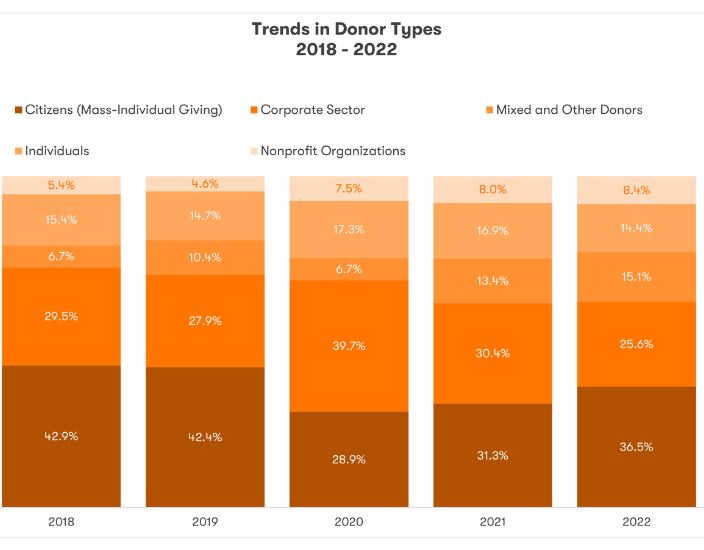
Graph 1: # of Instances of Giving in Serbia, Disaggregated by Type of Donor – 2018 – 2022
In 2022, citizens played a significant role in donations, contributing to over a third of all instances and accounting for more than two-thirds of the total donated amount. The corporate sector emerged as the second most active donor type, representing 25.6% of all donation instances. Additionally, instances where multiple donor types were involved comprised 15% of all donation instances. Individuals constituted a share of 14.4% in the overall donor landscape.
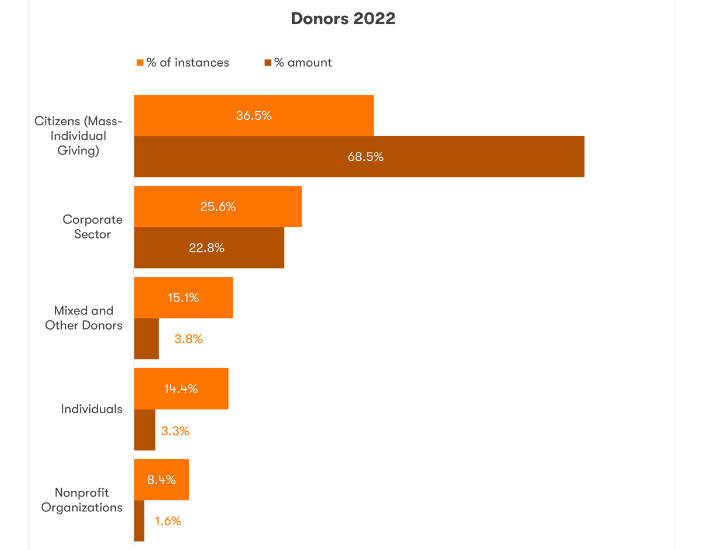
Graph 2: Structure of Type of Donor in Serbia in 2022
Mass Individual Giving
In 2022, citizens through mass-individual giving were the most active donor type. Regarding the type of recipient, citizens primarily supported nonprofit organizations through fundraising campaigns. A significant portion, 58.6% of all mass individual donations, was directed towards the nonprofit sector, aligning with the nature of organized campaigns. Healthcare was the primary focus of citizens' donations, particularly in providing medical treatments. Throughout the years, various forms of mass individual fundraising were observed in Serbia, including SMS donations, online donations through platforms like Donacije.rs, fundraising events, and others.
Technological advancements and the impact of the pandemic led to a shift towards online donations and non-live events, as citizens and the nonprofit sector adapted to the new circumstances. The growth of crowdfunding in Serbia is evident in the increased amount collected through the Donacije.rs platform. In 2022, over 212,600 euros were donated to support various initiatives through the Donacije.rs platform, compared to 180,000 euros in 2021. Mass individual donations accounted for approximately 33,500 euros, while the remaining amount was contributed by mixed donors, including citizens, companies, individuals, and others.
Giving by Individuals
Individual donors initiated 14.4% of all donation instances, contributing 3.3% of the total donated amount. There was a slight decrease in donations by individuals compared to the previous year. Unlike citizens (through mass-individual giving) who primarily supported the nonprofit sector in 2022, individuals tended to direct their support directly to individuals in need, often focusing on people in economic need.
To Whom Individuals Gave in 2022

Graph 3: # of Instances of Individual Giving Disaggregated by Type of Recipient
Private entities, including citizens (through mass-individual giving) and individual donors, directed their donations more often through nonprofit entities rather than the state (institutions and authorities). Mass-individual donations were primarily channeled through nonprofits, followed by direct support to individuals and families in need (27.6% of instances). Giving to institutions accounted for 10.7% of all mass-individual instances, while authorities had a share of 1% of such instances.
In contrast, individual donors predominantly provided direct support to individuals and families, displaying a more centralized structure of giving across recipients. More precisely, 82.5% of instances from individual donors were directly allocated to individuals and families in need, 12% to nonprofits, and 4% to institutions.
For What Intended Effects Individuals Gave in 2022
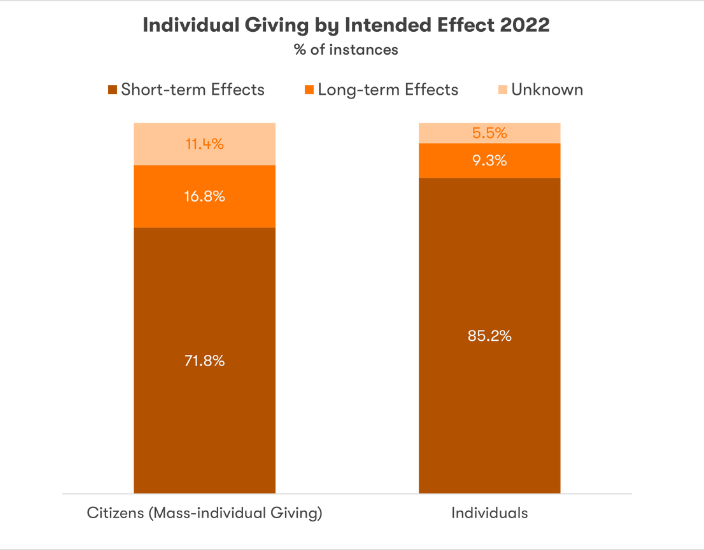
Graph 4: % of Instances of Giving by Individuals Disaggregated by Intended Effect of Giving
Donations with intended short-term effects were the predominant type of giving by private entities, including citizens and individuals. Among mass-individual donations, 71.8% were categorized as donations with short-term intended effects. Similarly, individuals exhibited an even higher proportion of short-term giving, with 85.2% of their instances falling into this category. Donations with intended long-term effects accounted for 16.8% of mass individual instances and 9.3% of individual instances.
Individuals commonly engaged in short-term giving through humanitarian support, reflecting a focus on addressing immediate needs. Meanwhile, citizens through mass-individual giving frequently directed their donations towards providing medical treatments.
Examples of Giving
Second year of the Superhero campaign
Mastercard and NURDOR's "Being Someone's Superhero" marked year two. Their online clothes collection raised 8,500 euros for NURDOR (National Association of Parents of Children with Cancer), furnishing the Parent's house.
“Donate a Scholarship” campaign
The non-governmental organization "Svetionik" provided 1,200 scholarships in 12 years. Their 2022's "Donate a Scholarship" campaign raised 14,780 euros on Donacije.rs, which was used to support 25 students from disadvantaged backgrounds.
Individual philanthropists
Mikica Petronijević donated property for an inclusive camp and was awarded the VIRTUS Award for Individual Philanthropy. Another philanthropist, Đorđe Tomić, aided his neighbors daily by providing transportation to medical appointments, also winning the VIRTUS for Young Philanthropy. Amongst other notable philanthropists was Nikola Stojković, who singlehandedly improved animal welfare in his community, while Sandra Tomić supported disadvantaged families, both awarded VIRTUS.
Humanitarian actions by pupils in Serbia
Schools in Serbia engaged in various humanitarian actions involving students, staff, and residents. The "Joy of Giving" campaign aided children from needy families. Ivan Milutinović School raised 3,300 euros for the treatment of a one-year-old. Similarly, Veljko Dugošević School's bazaar gathered 8,500 euros for student treatment and aid to economically challenged families. Magdalena Stanković and peers earned VIRTUS Award for encouraging peer philanthropy.
Giving by Companies
The corporate sector in Serbia accounting for approximately a quarter of all donation instances and contributing 22.8% of the total donated amount. Philanthropic actions from companies in 2022 generated the amount of more than 7.6 million euros. Among corporate donors, companies constituted the majority, representing 72.6% of all corporate donation instances. Small and medium-sized enterprises (SMEs) contributed 21.7% of instances, while corporate foundations accounted for 5.7%. Corporate donations were most often donated by direct giving, and most frequently included support of healthcare. Amongst the most active corporate donors in Serbia during 2022 were Nis a.d. Novi Sad, DM drogerie markt d.o.o, Mozzart d.o.o. Belgrade, Telekom Srbija a.d., Lidl Srbija KD, and others.
To Whom the Corporate Sector Gave in 2022
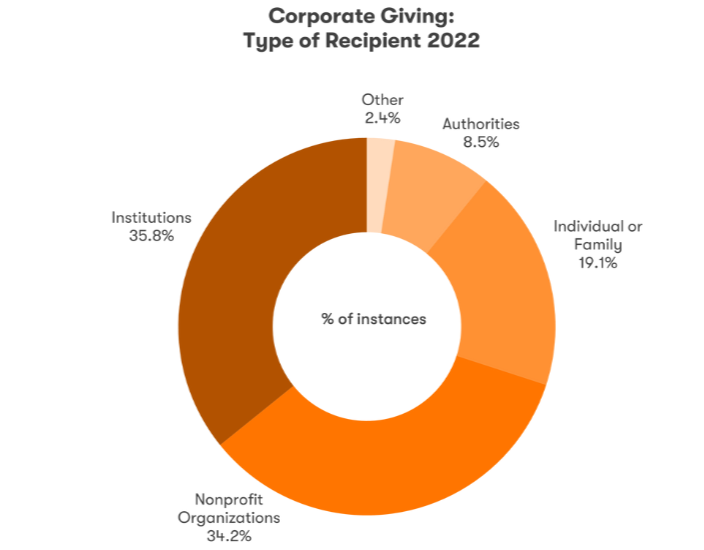
Graph 5: # of Instances of Corporate Giving Disaggregated by Type of Recipient
While private entities focused mainly on the support to nonprofits, the largest percentage of corporate giving was done through the work of institutions. Primarily, these included educational and health institutions. Giving to nonprofits took up 34.2% of all corporate giving, followed by donations directed to individuals and families (19.1%), authorities (8.55), and other recipients (2.4%). The high share of instances of corporate donations toward nonprofits indicates an inclination towards partnerships between nonprofits and corporations in philanthropic initiatives. These collaborations take various forms, such as direct corporate donations to associations and foundations, ongoing financial or in-kind support for specific projects, and joint initiatives.
For What Intended Effects Companies Gave in 2022
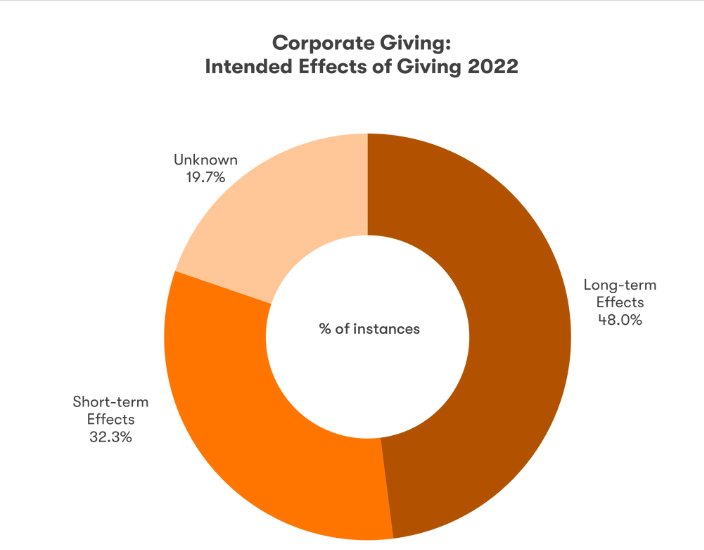
Graph 6: % of Instances of Corporate Giving Disaggregated by Intended Effect of Giving
In 2022, nearly half of all corporate donations had intended long-term effects, while just under a third were aimed at achieving short-term impacts. Among the long-term corporate donations, the largest portion consisted of equipment donations. These donations encompassed various items, including medical devices intended for health institutions, IT equipment intended for schools, as well as furniture and other types of equipment.
Examples of Giving
Support to women empowernment
Avon Cosmetics backed Autonomous Women’s Center since 2008, donating 13,000 euros in 2022 for programs aiding women survivors of domestic violence. Lidl Serbia KD launched the "Strong. Brave. Important" competition, supporting female entrepreneurs by showcasing products in stores. The Lindex Pink campaign by Triple Jump Group raised 100,000 euros for the breast cancer fight.
“Support, not Perfection” program
Generali Insurance Serbia and Novak Djoković Foundation ran the "Support, Not Perfection" program for parents and guardians. Over 600 workshops helped 2,300 parents, earning Generali Insurance Serbia VIRTUS Award for Long-Term Partnership.
Fair Play Tournament
UNICEF's Fair Play basketball tourney united businesses and raised 18,700 euros for Mental Health Promotion for Children and Youth program. Imlek, OTP Bank, SAGA, L'Oreal Balkans, Brose, Delta Foundation, SBB, Comtrade, and others participated.
Corporate investment for healthcare
Galenika company donated 80,000 euros to Institute for Cardiovascular Diseases Dedinje, enhancing surgical treatment for heart valve disorders. The modernized method aims for more surgeries and shorter operation times.
To Whom the Diaspora Gave in 2022
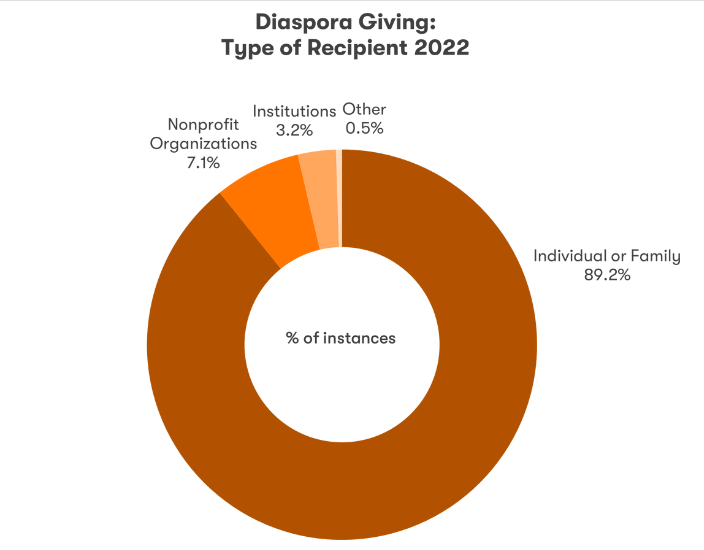
Graph 7: # of Instances of Diaspora Giving Disaggregated by Type of Recipient
According to the Giving Balkans database, in 2022 donors from the diaspora donated around 1.8 million euros, collected through 602 unique donation instances. The majority of donations were directly allocated to individuals and families – in 89.2% of all instances. These contributions primarily aimed to provide support to marginalized groups, accounting for 40.5% of all diaspora donations, followed by poverty relief efforts at 38.2%.
For What Intended Effects the Diaspora Gave in 2022
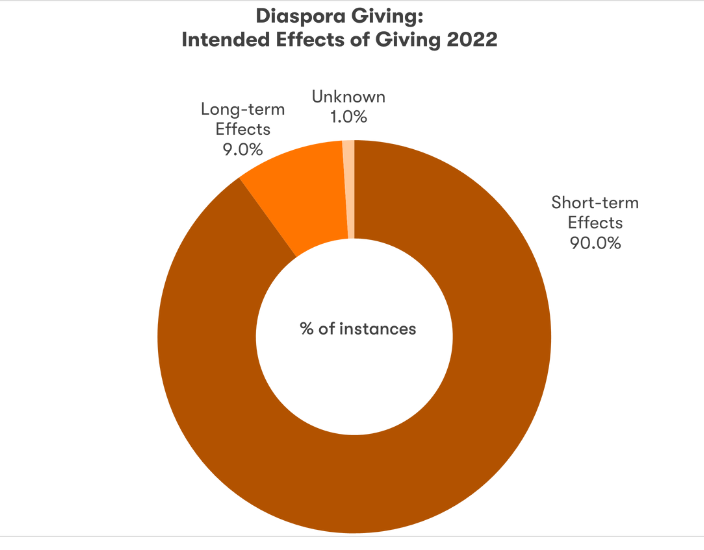
Graph 8: % of Instances of Diaspora Giving Disaggregated by Intended Effect of Giving
Similarly to local individual donors, diaspora donations prevailed in donations with short-term effects (90% of all instances). On the other hand, long-term giving generated only 9% of all instances from the diaspora.
Examples of Giving
Diaspora from Switzerland provided aid for socially disadvantaged families
Humanitarian organization Nemanjići – Tićino, formed by the Swiss diaspora in 2009, raised 39,400 euros in 2022 to aid socially disadvantaged Serbian families.
Serbian Diaspora in USA donated for healthcare
SAMA, the Serbian American Medical Association, raised 110,000 euros in Chicago's dinner event. Funds support hemodialysis center reconstruction at General Hospital in Užice.
Serbian Philanthropic Gala 2022
Serbian Philanthropic Association organized the annual Gala in NYC. 400 attendees raised 93,000 euros for Studenica Foundation's student scholarships program, benefiting 65 Serbian college students.
The Annual report Giving Serbia 2022 was supported by the C. S. Mott Foundation and the Rockefeller Brothers Fund. The views expressed on this web page do not necessarily reflect the views of the C. S . Mott Foundation and the Rockefeller Brothers Fund and their partners.


Leave a comment